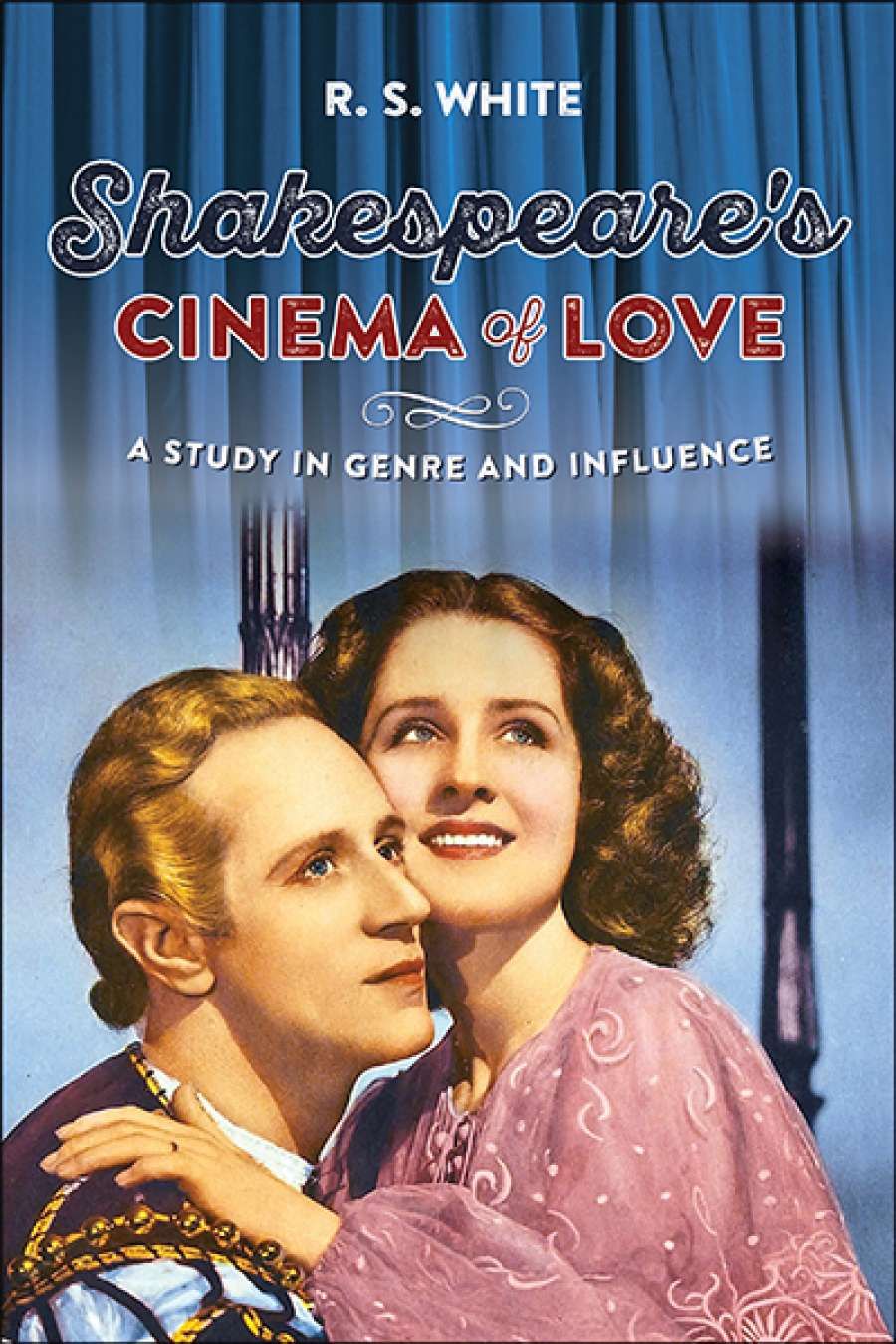
- Free Article: No
- Contents Category: Film
- Custom Article Title: David McInnis reviews 'Shakespeare’s cinema of love: A study in genre and influence' by R.S. White
- Review Article: Yes
- Online Only: No
- Book 1 Title: Shakespeare’s cinema of love
- Book 1 Subtitle: A study in genre and influence
- Book 1 Biblio: Manchester University Press (Footprint), $154 hb, 247 pp, 9780719099748
The Taming of the Shrew is accordingly valued for its contribution to the formation of ‘odd-couple’ or ‘screwball’ comedy, in which adversarial relationships between the sexes are explored along a broad spectrum encompassing ‘social conservatism, populism, and egalitarian attitudes’, depending on the historical context. Here, White provides a helpful overview of seminal film versions of Shrew including the Mary Pickford–Douglas Fairbanks production of 1929 through to Franco Zeffirelli’s more ‘simplistic’ 1967 film starring Elizabeth Taylor and Richard Burton, and the conservative heteronormativity of the 1950s musical Kiss Me Kate. But it is the attention to the less obvious beneficiaries of Shakespeare’s love-paradigms that stand out: the ‘sexual antagonism’ and ‘anarchic individualism’ of such screwball comedies as Love Before Breakfast (1936), Adam’s Rib (1949), or the ‘anti-romantic comedy of marriage’, It Happened One Night (1934). White’s subtitle, ‘genre and influence’, is slightly misleading in that a ‘process of reciprocal enlightenment’ (rather than unidirectional ‘influence’) characterises his scholarship: for example, these films’ reliance on pre- and postwar attitudes to gender in constructing plausible motivations for characters who, in Shakespeare, were merely commedia dell’arte stereotypes, offers the opportunity to read Shrew through Hollywood, not merely the other way around. In the context of Shrew this might mean renewed attention to the fate of Katharina’s sister, which yields ‘surprising, underlying similarities of genre between All About Eve [1950] and The Taming of the Shrew’, provided ‘we respect Shakespeare’s design, which places more weight than productions usually afford on the plot concerning Bianca’. Perhaps, White suggests wryly but provocatively, we might think of Shrew as ‘All About Bianca’.
 Bette Davis and Gary Merrill in the 1950 film All About Eve (Warner Bros. Via Wikimedia Commons)A chapter on the ‘structural components of romantic comedy’ emphasises the way films are as likely to borrow liberally from a variety of plays as to adapt a single Shakespearean precursor. Arguing that, for a modern audience, Shakespeare essentially ‘invented’ the forms of comedy now popularly associated with him, White outlines key conventions from A Midsummer Night’s Dream, As You Like It, Twelfth Night, and The Merchant of Venice that are shown to exert a constant influence on film genre ‘despite the economic, political, cultural, and historical changes’ accompanying over a century of films (he also includes a ‘clear and comprehensive’ list of the ‘shared territory’ as found in film). The Philadelphia Story (1940) and Bringing Up Baby (1938) are accordingly linked to Dream, whilst Meet Me In St. Louis (1944) is ‘an economical foreshortening of As You Like It’.
Bette Davis and Gary Merrill in the 1950 film All About Eve (Warner Bros. Via Wikimedia Commons)A chapter on the ‘structural components of romantic comedy’ emphasises the way films are as likely to borrow liberally from a variety of plays as to adapt a single Shakespearean precursor. Arguing that, for a modern audience, Shakespeare essentially ‘invented’ the forms of comedy now popularly associated with him, White outlines key conventions from A Midsummer Night’s Dream, As You Like It, Twelfth Night, and The Merchant of Venice that are shown to exert a constant influence on film genre ‘despite the economic, political, cultural, and historical changes’ accompanying over a century of films (he also includes a ‘clear and comprehensive’ list of the ‘shared territory’ as found in film). The Philadelphia Story (1940) and Bringing Up Baby (1938) are accordingly linked to Dream, whilst Meet Me In St. Louis (1944) is ‘an economical foreshortening of As You Like It’.
Subsequent chapters on musical comedy’s reliance on Shakespearean conventions and on ‘disguise and mistaken identity’ repeat the formula of surveying explicitly Shakespearean examples followed by less intuitive instantiations of generic influence that exhibit such shared conventions as the contrast between repressive institutions and a ‘green world’ of liberation. White’s concept of ‘genre’ is capacious enough to encompass the disguise motif as ‘at least a sub-genre of romantic comedy’, and flexible enough to accommodate a specifically ‘Romeo-and-Juliet genre’ in the final chapter. Whilst acknowledging Shakespeare’s liebestod myth sources, White argues that Shakespeare’s handling of the love-death myth is the most familiar in Western culture. He distinguishes Romeo and Juliet from the other Shakespeare plays in his study on the grounds that ‘the actual narrative’ (rather than a more ‘generalised genre such as “romantic comedy”’) influenced movies. More so than in previous chapters, White here moves out from Hollywood to consider the effect of Shakespeare on global cinema.
White’s chosen focus on genre formation is not a Rorschach test in which every inky film presents Shakespeare’s likeness; the attention to structural analogies between Shakespearean romantic comedy and Hollywood love stories is compelling, and although it is ostensibly a cinematic study, it encourages the reader to critically reinterpret Shakespeare’s plays rather than merely strain to spot the Shakespearean allusion in films.


Comments powered by CComment